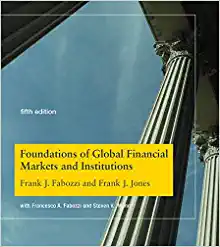

Evaluate the following claims. 1. The only difference between Monte Carlo and the bootstrap is possibility and impossibility, respectively, of sampling from the true population. 2. When one does bootstrap, there is no reason to raise the number of bootstrap repetition too high: there is a level when making it larger does not yield any improvement in precision. 3. The bootstrap estimator of the parameter of interest is preferable to the asymptotic one, since its rate of convergence to the true parameter is often larger. Consider the following bootstrap procedure. Using the nonparametric bootstrap, generate boot- strap samples and calculate s - 0 at each bootstrap repetition. Find the quantiles 95/2 and of-a/2 *(0) from this bootstrap distribution, and construct CI = 18 - s(0)91-a/2 0 - s(0)95/2]. Show that C/ is exactly the same as the percentile interval, and not the percentile-t interval. 1. Consider a random variable a with mean p. A random sample {r,)"_, is available. One estimates a by 2,, and a by 2.. Find out what the bootstrap bias corrected estimators of / and fare. 2. Suppose we have a sample of two independent observations 21 = 0 and 22 = 3 from the same distribution. Let us be interested in E[= ] and (B[=])? which are natural to estimate by 24= 1(2 + =) and 8* = 1(21 + 22)". Compute the bootstrap-bias-corrected estimates of the quantities of interest. 1. Suppose one has a random sample of n observations from the linear regression model y=x8+e, Ejez] =0. Is the nonparametric bootstrap valid or invalid in the presence of heteroskedasticity? Explain. 2. Let the model be but E [ex] # 0, ie. the regressors are endogenous. The OLS estimator # of the parameter A is biased. We know that the bootstrap is a good way to estimate bias, so the idea is to estimate the bias of A and construct a bias-adjusted estimate of S. Explain whether or not the non-parametric bootstrap can be used to implement this idea. 3. Take the linear regression y=x8+c, E[ex] =0. For a particular value of z, the object of interest is the conditional mean g(x) = Elyx]. Describe how you would use the percentile-t bootstrap to construct a confidence interval for g().Recall the formulation of Problem 2.4. 1. Describe in detail how to construct 95% error bands around the IRF estimates for the AR(1) process using the bootstrap that attains asymptotic refinement. 2. It is well known that in spite of their asymptotic unbiasedness, usual estimates of impulse response functions are significantly biased in samples typically encountered in practice. Pro- pose a bootstrap algorithm to construct a bias corrected impulse response function for the above ARMA(1,1) process










